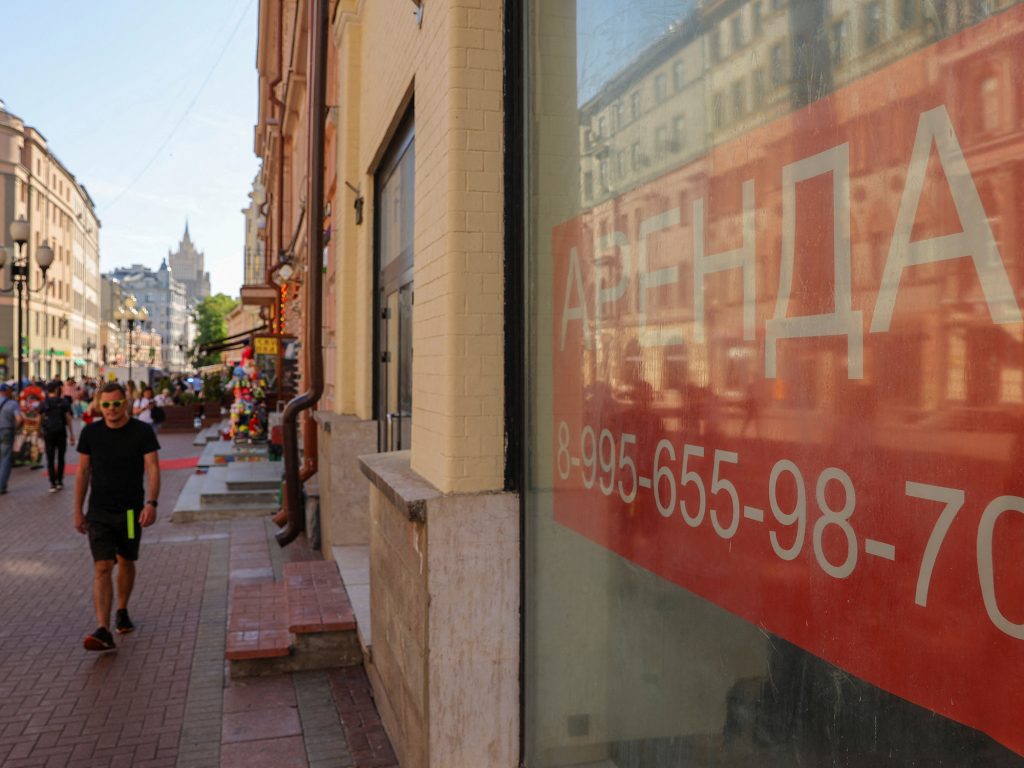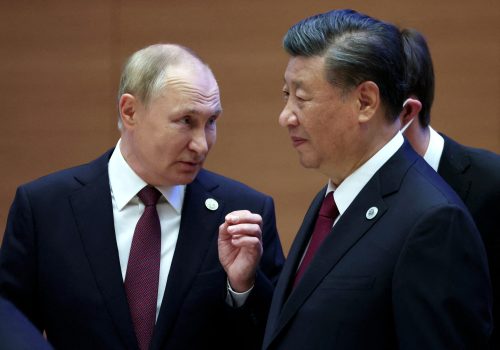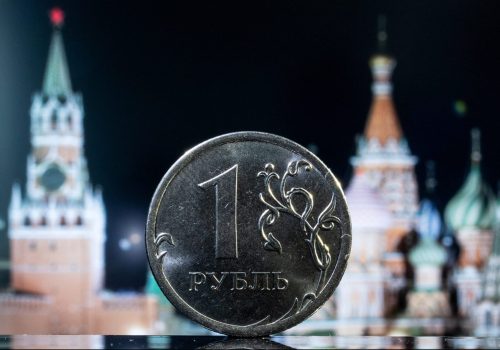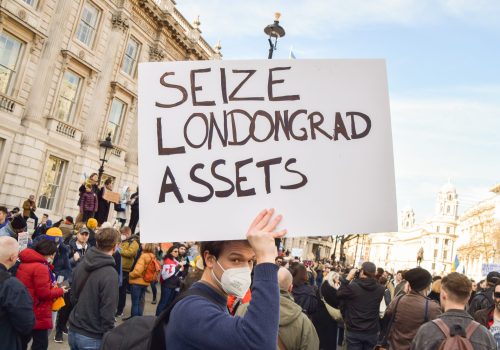One year ago, Ukrainian President Volodymyr Zelenskyy was a comic-turned-politician struggling to contain graft and forge effective governance in the country’s notoriously murky political scene. The media was dominated by stories predicting that Kyiv would fall within days of Russian forces crossing the border, amid skepticism in Ukraine that invasion was imminent. Russian President Vladimir Putin was at the height of his power, having quashed domestic political opposition, and openly previewing what he expected to be quick and decisive military action against alleged (and fictional) Nazis in Ukraine and (non-existent) NATO aggression against Russia.
Today, Zelenskyy is lauded as a national hero and brilliant wartime leader, Putin is increasingly isolated around the world, and Ukrainian troops have stymied the military of a supposed superpower, albeit at great cost in terms of the lives and livelihoods of Ukrainians.
The chief reason for this turnaround is the bravery of Ukraine’s people, followed by the massive military aid that the West has provided to help narrow Moscow’s advantages in military hardware.
But next down that list of factors are sanctions and export controls against Russia. This conflict will be won on the battlefield, not in financial hubs across the world. The West’s sanctions, however, have hampered Russia’s economy and degraded Russia’s military capabilities, and are a crucial component of the strategy to contain Putin and his aggressions beyond just this war.
Evaluating the impact of the 2022 sanctions
The initial spurt of sanctions imposed on Russia included the Group of Seven (G7)’s decision, mere days into the conflict, to restrict the foreign exchange reserves of the Russian Central Bank. This dramatic escalation of pressure had immediate impact on Russia’s financial system. Russians queued up to pull cash out, the Russian stock markets and currency crashed, and the Russian Central Bank quickly implemented harsh capital controls to arrest the slide. This drama, however, led to some over-optimism regarding the effects of sanctions, with US President Joe Biden famously claiming he intended to reduce the ruble to “rubble.”
That clever play on words hasn’t held true, nor was it a great measure of sanctions’ effectiveness. Russia largely was allowed to continue selling energy products to the world and the foreign exchange from those sales allowed it to stabilize the ruble’s value, which today is close to pre-war levels.
The focus on a narrow measure like the status of the ruble or the oft-used red herring “Putin is still in Ukraine,” however, makes for lazy criticism of Western sanctions on Russia. Russia’s economy has in fact been battered by those sanctions, and things are only going to get worse.
The West has used all of the tools of economic statecraft at its disposal to inhibit Russia’s economy, which by extension degrades the Kremlin’s military capabilities. The key areas targeted have been Russia’s financial system, with almost all of the country’s largest banks banned from Western-dominated financial markets; its energy sector, where Moscow faces reduced revenues due to a combination of Western prohibitions on investment and limits on the price of its energy sales through a price cap system; its technology sector, where enterprises critical to economic growth and military capacity have been cut off from Western technology; and important state-owned enterprises subject to blocking sanctions that freeze their assets and cut them off from Western technology and services.
The effects have been dramatic, even if the hit to the Russian gross domestic product (GDP) has been less severe than some predicted at the start of the conflict. Russia’s GDP contracted in 2022 between 2.2 percent and 3.9 percent, compared with World Bank predictions prior to the invasion of 2.4 percent growth for that year. The World Bank and Organization for Economic Cooperation and Development predict even larger contractions in 2023 of between 3.3 percent and 5.9 percent (although the International Monetary Fund predicts marginal 0.3 percent growth). Russian inflation has run at 14 percent year on year.
Russian oil revenues, the key driver of state income, fell dramatically in January 2023 following the European Union’s cessation of most oil imports from Russia and the imposition of the G7 price cap. In 2022, tax revenue not involving income from oil and gas came in 20 percent lower than expected. Indeed, amid plunging imports and the withdrawal of most major Western firms from the country, Russian consumers and the economy they support have suffered. Automobile sales, for example, were off more than 50 percent in 2022 compared with the prior year, and the cars Russians have available to buy include new Ladas without airbags or anti-lock braking systems (but still with high prices!) as the Kremlin scraps regulations left and right to cover up for its weakening economy.
To cope, the Russian government has spent money hand over fist in 2022 to prop up the economy and try to neutralize the worst impacts of Western sanctions. Even with a large financial buffer in the sovereign wealth fund to continue fiscal stimulus, the Russian economy has begun to look like a leaky ship. All hands are on deck bailing it out, but at some point, they won’t be able to keep up.
While sanctions and export controls should not be thought of as military tools to influence the battlefield, they clearly have impaired Russia’s ability to field a competent military force, especially given the country’s supposed superpower status. The Kremlin has been forced to cope with major supply chain shortages that have hampered Russia’s air force and tank production, and compelled to turn to Iran and North Korea for drones and other military equipment. Russia’s military has even been cannibalizing microchips from washing machines and breast pumps to repurpose them for military use given a lack of reliable domestic production or external sources of chips.
Forecasting what comes next
The anniversary of Russia’s invasion will reportedly bring with it a robust sanctions package across the G7 nations leading the sanctions charge. Expect such a package to cover the waterfront of sanctions that have been imposed over the last year and reinforce the measures already in place. The package will likely contain sanctions against banks, energy companies, oligarchs, military procurement, and, crucially, evasion efforts of those already sanctioned by the West. It beggars belief to imagine that the major Russian banks are not hiding transactions in non-sanctioned banks, and the United States in particular has already imposed several rounds of sanctions targeting Russian efforts to evade sanctions. Of particular interest will be whether additional export control restrictions are applied to companies outside of Russia assisting in procuring banned technologies.
The year ahead will likely bring more of the same in terms of sanctions, barring a significant escalation by Russia such as the use of a nuclear or chemical weapon. Russian sanctions evasion is a state-wide endeavor and will be a major focus for the West as it seeks to preserve the impact of the sanctions it has already imposed. US Treasury Department Deputy Secretary Wally Adeyemo made that clear in remarks delivered for the anniversary of the invasion, framing the choice for other countries as “us or them.” That stark framing, reminiscent of the sanctions push prior to the nuclear deal with Iran, was notable given reports that China is considering direct military support to Russia and the reluctance of much of the Global South to condemn Russia for its brutal assault in Ukraine. It will be important for Western policymakers to diplomatically engage the Global South in isolating Moscow while also cracking down on sanctions evasion.
The G7 nations may also seek to make sanctions across jurisdictions more consistent, since the differences can create unequal playing fields for Western companies and give bad Russian actors the opportunity to exploit the variations. Such an effort would include more sanctions on high-profile Russian oligarchs and, by extension, their companies, as oligarch sanctions is the area of greatest discrepancy across the United States, the European Union, the United Kingdom, and Canada.
The most high-profile sanctions of the last few months—the price caps on Russian crude oil and refined products—will garner much attention and handwringing. Whether or not the price cap mechanism “works” is a difficult thing to measure, but ultimately the success or failure of the policy may lie in oil markets themselves and not necessarily the mechanism. If crude spikes to $110 per barrel or higher, there will be enormous pressure on a very complex and questionably reliable attestation process for compliance with the price cap—a process that is crucial to the mechanism’s effective functioning. But if markets remain soft, then it seems likely that the dual goal of reducing Russian revenue and keeping Russian product on the market will more or less be met. It’s a cliché but in this case also a reality: Only time will tell.
Several other areas of Russia’s economy have yet to come under substantial sanctions, including the metals and mining and shipping and transportation sectors. And there are many Russian banks, energy firms, and military-related entities that could make good sanctions targets. Part of the playbook for implementing economic statecraft is the notion of broadening and deepening sanctions—the former involving targeting new sectors of an economy and the latter entailing imposing more sanctions on sectors already under sanctions. This broadening and deepening approach will likely guide Western sanctions over the course of 2023.
Assessing the strategic outlook
Sanctions will not achieve military victory for Ukraine. They are unlikely to cause regime change in Russia. But they nonetheless have important goals. Stronger enforcement of and compliance with sanctions, for example, can help continue to degrade Russia’s military capabilities since there is no substitute for Western technology; Adeyemo claimed that 40 percent of the microchips Russia imports from China are defective. Continued stress on the Russian economy also will reduce the amount of money for patronage (or corruption) that Putin has relied on to build and sustain his power base. The longer-term outlook for Russia under sanctions is akin to the terminal decline of the Soviet economy in the 1980s, a grim prospect for Moscow.
Moreover, sanctions on Russia are still, in our estimation, only about 70 percent of the scale of those imposed on Iran or North Korea; there is plenty of room to increase the pain inflicted on Russia’s economy. For Iran and North Korea, with isolated exceptions, all transactions involving the countries are banned. For Russia, by contrast, transactions with the country are not prohibited unless they have been specified as bad. This leaves the West with plenty of tools at its disposal to continue to hinder the Kremlin’s aggression and isolate Putin and his heinous worldview.
Brian O’Toole is a nonresident senior fellow with the Atlantic Council’s GeoEconomics Center. He is a former senior adviser to the director of the Office of Foreign Assets Control at the US Department of the Treasury. Follow him on Twitter @brianoftoole.
Daniel Fried is the Weiser Family distinguished fellow at the Atlantic Council. He was the coordinator for sanctions policy during the Obama administration, assistant secretary of state for Europe and Eurasia during the Bush administration, and senior director at the National Security Council for the Clinton and Bush administrations. He also served as ambassador to Poland during the Clinton administration. Follow him on Twitter @AmbDanFried.
Further reading
Wed, Feb 22, 2023
Russia and China have been teaming up to reduce reliance on the dollar. Here’s how it’s going.
New Atlanticist By Maia Nikoladze, Mrugank Bhusari
Squeezed by sanctions, Russia has turned to Chinese yuan and gold, but both introduced new vulnerabilities and inconveniences.
Thu, Feb 9, 2023
Countering Russian threats to global financial security
UkraineAlert By Benton Coblentz
Russia and its proxies have long exploited the rules-based global financial system for their personal gain and in service of Moscow’s geopolitical strategy, but the invasion of Ukraine has sparked calls for counter measures.
Tue, Jan 24, 2023
Authoritarian kleptocrats are thriving on the West’s failures. Can they be stopped?
Report By Francis Shin, Ben Judah
A new, more dangerous form of kleptocracy has arisen since the end of the Cold War, and the transatlantic community—hobbled by outdated, cliched images of what kleptocracy looks like, and by siloed, reactive regulatory and enforcement systems—isn’t equipped to handle it. A Transatlantic Anti-Corruption Council could coordinate anti-corruption reforms.
Image: A pedestrian walks past the windows of business premises put out for rent in Moscow, Russia June 8, 2022. Photo via REUTERS/Evgenia Novozhenina.



